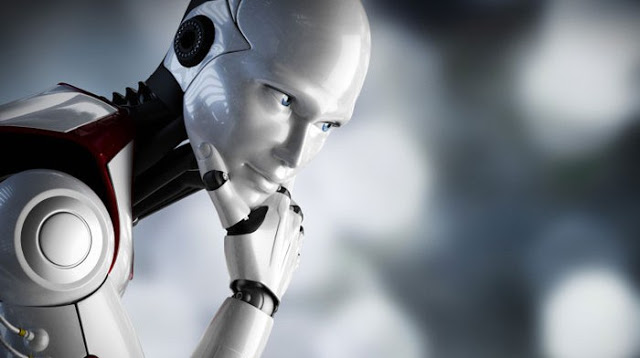Is price paid for food dictated by artificial intelligence?
Is the price we pay for food dictated by artificial intelligence? “Dictated” may be too strong of a verb but “influenced” is definitely a possibility.
March 11, 2017

Whether the sugar in sweet tea, chocolate chips in cookies or steak on your plate, food production goes through a multitude of processes before consumed. At each processing step, an individual or company assumes inherent risks to complete a step. Drought, economic changes, floods, disease, and price fluctuation are among some of the risks assumed in commodity production. Insurance is available and plays a role in agricultural production to help mitigate loss from natural disasters. Increasing or decreasing supply during economic changes may be beneficial toward producers, and good farming/ranching practices may reduce disease and health issues. Risks of price fluctuation can be managed using futures and options, forward contracting and participation in vertical integration.
Recently, of all the factors associated with production, price fluctuation has been on the forefront of most discussions. This is due to the exceptionally wide price swings, volatility and speed in which prices change. Few, if any, producers were privy to the onslaught of computer-generated trading to come that helped to create these factors. Automated trading, high frequency trading and artificial intelligence are now buzz words with little understanding of how they worked. Lack of information and understanding produced fear and tremendous anger to nearly an entire industry of agricultural production.
Price fluctuation of commodities are based upon changes in the fundamentals of production and increase or decrease in demand. Humans have forever enjoyed the practice of attempting to forecast the future. Careers have been built on attempting to foresee the factors that fluctuate price. The determinations made by these, flows through the industries and cause action to be taken by participants. These actions in turn move price as buying or selling increases or decreases due to the anticipation of an event materializing. Regardless of whether your decision making process is correct or not, you based that decision upon realistic expectations of production. Your decision to buy or sell was translated into the market place and impacted to a degree the final price that a consumer paid for the finished product. Hence, whether you were a speculator or hedger participant, your thought process helped to determine a price that would ultimately impact the price to the consumer.
In the context of commodity trading, artificial intelligence is not the ability to foresee a fundamental change in a specific commodity or forecast a potential price movement up or down. It is believed that artificial intelligence, when applied to commodity trading, attempts to read and decipher order flow coming into the exchanges for entry or exit of a long or short commodity contract position. The computer calculates incoming data at a rate of milliseconds, deciphers it, and automatically produces buy and sell orders with great speed and in large volume. No part of the artificial intelligence’s decision making process was formed from any fundamental occurrence of the commodity.
To be fair, whether decisions to buy or sell are generated by human thought process or computer programmed, the attempted end result for speculation is the generation of profits. Speculation is needed in commodity production. Speculators assume risk for those who wish to transfer risk. Rampant speculation has the potential to push the price of a commodity above or below what fundamentals may have warranted. This impacts the final price to the consumer. Prior to the inception of artificial intelligence trading in commodities, humans dictated price movement based upon a multitude of factors. Regardless of the outcome, it was humans that helped set the price for the corn flakes, bread, coffee, etc. that we consume each day. We as participants reveled in watching trading professionals apply their expertise to manage price fluctuation. We gave high regards to those who benefited the industry while the market itself tended to weed out those not well suited. That was then.
Now, no one revels the computers ability to generate tens of thousands of trades per second. Few have any understanding of how artificial intelligence works. Although clearly a feat of mathematical and computer programming mastery, artificial intelligence appears to bring no benefit to commodity production, price, or management of price. The intelligence attempts to decipher order flow in a direction and then place orders faster than what it perceives is coming into the exchange. Due to speed of order flow and size of volume, these computers can overwhelm normal order flow and produce exceptional volatility in a very wide price range. Many algorithmic traders attempt to justify their existence in the markets by suggesting they provide liquidity. Yes, the volume of orders does produce liquidity, but only to a few that are either currently in the market or can act or react at the same speed in which they operate. Most times, the volume produces such lightening fast price moves, or wide expanse of price range, that their presences offers little to the function of the futures market. That function is the discovery of price. Humans, whether traders, commercial users, or commodity funds, tend to be vested in either providing liquidity to the market on a consistent basis or are end users of the commodity. Algorithmic trading can only thrive at certain times of the day or events that transpire when volume is high to begin with. When circumstances are not in their favor, they tend to be absent from the day in day out grind of commodity trading.
Is the price we pay for food dictated by artificial intelligence? I believe that “dictated” may be too strong of a verb. Potentially, “influenced” would be the proper verb to describe their involvement in the markets.
I continue to see prices move in directions consistent with fundamentals. Hence fundamental factors continue to dictate price direction. However, the extent of price movement within a day is influenced greatly by the volume that is produced due to participation of artificial intelligence traders. Since the collapse of the economy in 2007, commodity prices have fluctuated greatly, with most having produced significant bear markets for several years now. Quantitative easing policy’s produced the ability to increase infrastructure for production. This fundamental aspect dictated price direction as the increase in infrastructure produced more commodity goods that overwhelmed demand. Artificial intelligence traders helped to exaggerate the decline in most of the commodities. While this was damning to producers, it is perceived as a great benefit to the consumer. We have all enjoyed lower gasoline prices, interest rates, and other food products due to this. Recall though that commodities have an intrinsic value. A price that says, regardless of how much there is, the need is greater at a certain price. Hence, a price can only go so low. At present, we are noticing subtle changes in the U.S. and world economies that are viewed as beneficial in helping to improve economic conditions. What should potentially be the more pressing question is, while in a bear market the artificial intelligence traders can push prices lower to the benefit of the masses, what impact will they have in a bull market where the sky is the limit?
About the Author(s)
You May Also Like



